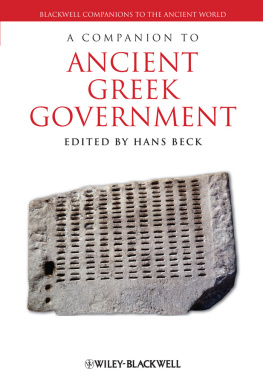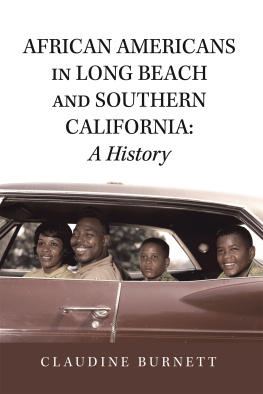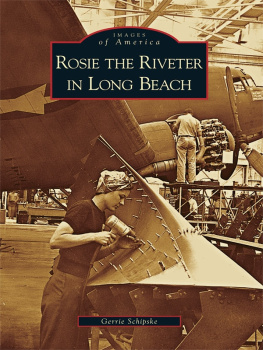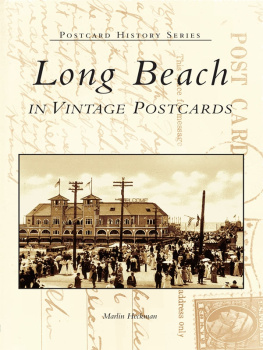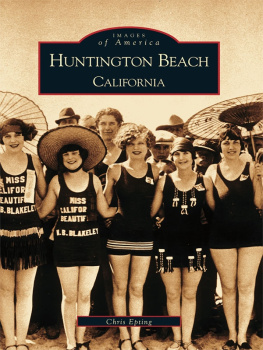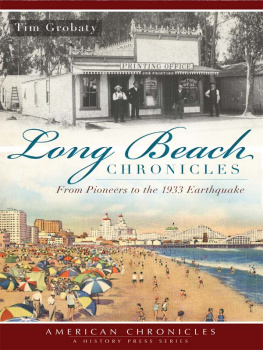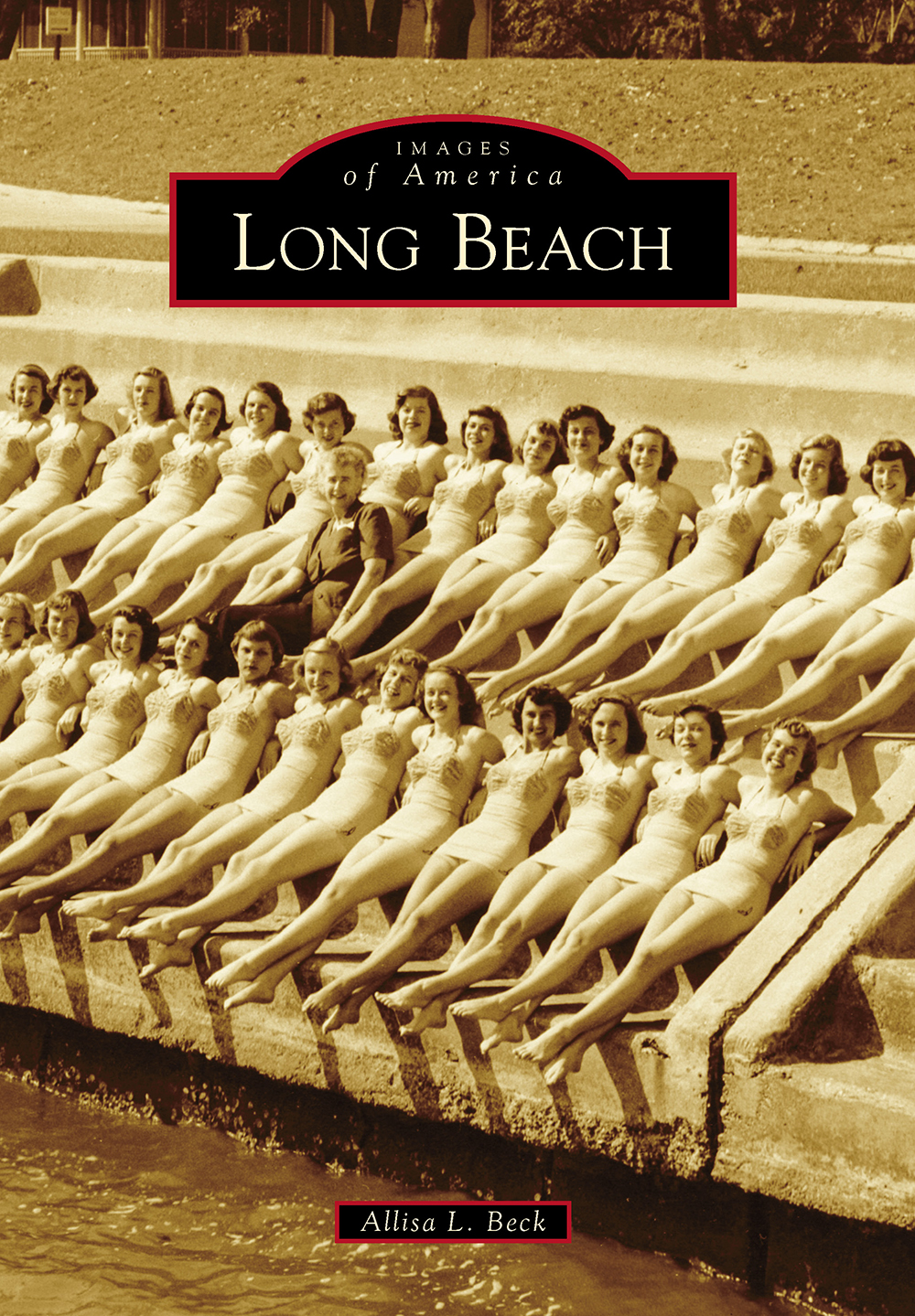
IMAGES
of America
LONG BEACH
ON THE COVER: Members of the water ballet team of Gulf Park College for Women strike a relaxed pose along a seawall with their physical education director in this 1950 photograph. The students at Gulf Park participated in many water sports, including swimming, diving, and synchronized swimming. The seawall, constructed in 1925, borders the longest man-made beach in the world, stretching for 26 miles along the Mississippi Gulf Coast. (Courtesy of Mississippi Gulf Coast Community College C.C. Tex Hamill Down South Magazine Collection.)
IMAGES
of America
LONG BEACH
Allisa L. Beck

Copyright 2015 by Allisa L. Beck
ISBN 978-1-4671-1371-7
Ebook ISBN 9781439651230
Published by Arcadia Publishing
Charleston, South Carolina
Library of Congress Control Number: 2014949591
For all general information, please contact Arcadia Publishing:
Telephone 843-853-2070
Fax 843-853-0044
E-mail
For customer service and orders:
Toll-Free 1-888-313-2665
Visit us on the Internet at www.arcadiapublishing.com
CONTENTS
ACKNOWLEDGMENTS
I would like to thank everyone who has been gracious enough to share photographs, family stories, and his or her own Long Beach experiences. This includes Paul Jermyn, Betty Shaw, Julia Arceneaux, Eddie Ware, Donald Dana, Mable Skellie, and Rose Donaldson. Special thanks go to Brenda Batey and Beth Hansen for contacting everyone they know to ask for photographs. I would also like to thank Janet Griffin, daughter of Mary Ellen Alexander, who allowed me to use photographs from her mothers extensive research collection. Last, but certainly not least, much appreciation goes to Charles L. Sullivan, who allowed me to use many of the Long Beach photographs from the archives at Mississippi Gulf Coast Community College.
INTRODUCTION
Known as the Friendly City, Long Beach is situated along the Mississippi Gulf Coast between Gulfport to the east and Pass Christian to the west. Although the city is one of the youngest along the coast, the history of the area can be traced back for hundreds of years before it was incorporated in 1905. The first name given to the area that would become Long Beach was Bear Point, labeled as such on 1774 British maps. At that time, the area was settled by the Choctaw Indians, who made their home along the stream that wound its way through the area. This stream would eventually be called Bear Point Bayou. The Choctaw would have found good soil for farming, the woods full of game, and the waters of the Mississippi Sound plentiful with fish and other seafood. The offshore barrier islands also offered some protection from the damaging storms that would frequently roar in from the Gulf of Mexico.
Long Beach went through several name changes during its history. After the original Bear Point name, it was known as the Chimneys for a time, named after the house built by the original European settlers, the Ladner family (sometimes written as LAdner). When the John McCaughan family moved to the area, they called it Rosalie. George Scott was responsible for getting the railroad to come through the area by building the first railroad stop. In appreciation for his generosity, the town was renamed Scotts Station. When James Thomas platted the town, Scott wanted to name the town after his wife, Harriet. However, a decision was made to name the town Long Beach after the beautiful beaches along the shore.
As the names for Long Beach changed, so did the town itself. The photographs throughout this book show how the road along the beach went from the unpaved, one-lane, shell Beach Road to a wider Beach Boulevard and then a four-lane Highway 90. Jeff Davis Avenue also grew from a narrow lane with only one or two general stores to a bustling downtown with a center of city government as well as shops and restaurants.
During the early 1900s, Long Beach became a truck farming center because of the rich soil along the coast. Although the Long Beach Long Red radishes were the most well known, farmers also grew other crops such as lettuce, sweet potatoes, beans, corn, and strawberries. There were also citrus groves and fruit and pecan orchards. When the Great Depression put an end to truck farming as an industry, the town then became known for the beautiful beaches and water sports that brought in tourists and summer residents.
The threat of hurricanes has always been in the minds of those who live along the Mississippi Gulf Coast, and locals accept this risk as just a part of living in the region. Nothing is known about the earliest hurricanes that struck the coast, as little to no records were kept. Later, Mississippi Gulf Coast hurricanes were documented in letters, postcards, diaries, and photographs. Some of these photographs are reprinted here, from the relatively mild 1906 hurricane to the devastation of Hurricane Katrina in 2005. The few photographs of Katrinas aftermath are the only contemporary images included, because that devastating hurricane has become a major event in the history of the Mississippi Gulf Coast.
This book offers just a sampling of the stories and photographs that help to tell the story of Long Beach, Mississippi. These photographs serve not only to relate these stories, but to also to document the loss of so many historical buildings and landmarks. The photographs are arranged in chronological order when possible, and it is hoped that this book opens a small window into the rich history of Long Beach and will be appreciated and enjoyed by those who read it.
One
EARLY SETTLERS
There were many families who helped settle Long Beach. They moved to the area for the rich soil in which they could grow plentiful crops and the seafood-rich waters of the Mississippi Sound, which would support their families. Some came to the area because their friends and relatives had already settled here and sent encouraging words back home. Not all who moved here were farmers. There were businessmen who helped develop the town, and there were also the summer visitors who sometimes journeyed here for a time and left, but there were many who came to visit and remained.

Nicholas and Marianne Ladner were the first to settle in the Long Beach area. This is a modern drawing of the Chimneys, the home that they built. When Nicholas died, his widow was given title to the land, which covered much of present-day Long Beach. It became known as the Widow Ladner Claim. The house later burned, leaving only the two tall chimneys. These were used as navigational landmarks for ships entering the Mississippi Sound. The entire area became known as the Chimneys. (Courtesy of Denise Bourg.)
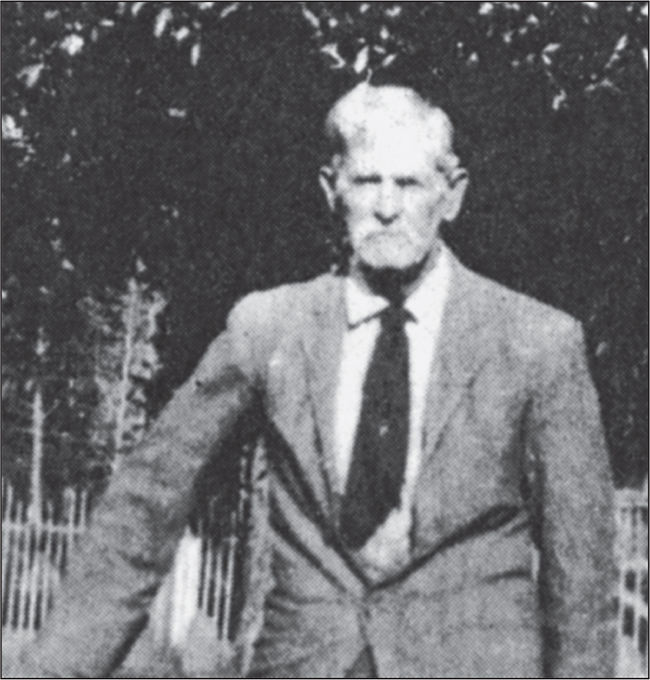
Harper McCaughan was born in 1856 at the site known as Rosalie. His father, John Johnston McCaughan, had come to the area to build the first railroad. He established nearby Mississippi City before moving to the area that had been part of the original Ladner Claim, which he named Rosalie. The former Rosalie site is now the location of the Gulf Coast Campus of the University of Southern Mississippi. Harper later donated much of the familys land for educational use, and the Harper McCaughan Elementary School is named in his honor. This photograph was taken around 1918 in front of his Jeff Davis Avenue home. (Courtesy of Long Beach Historical Society Archives.)
Next page


